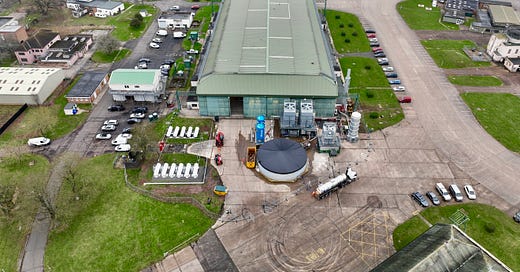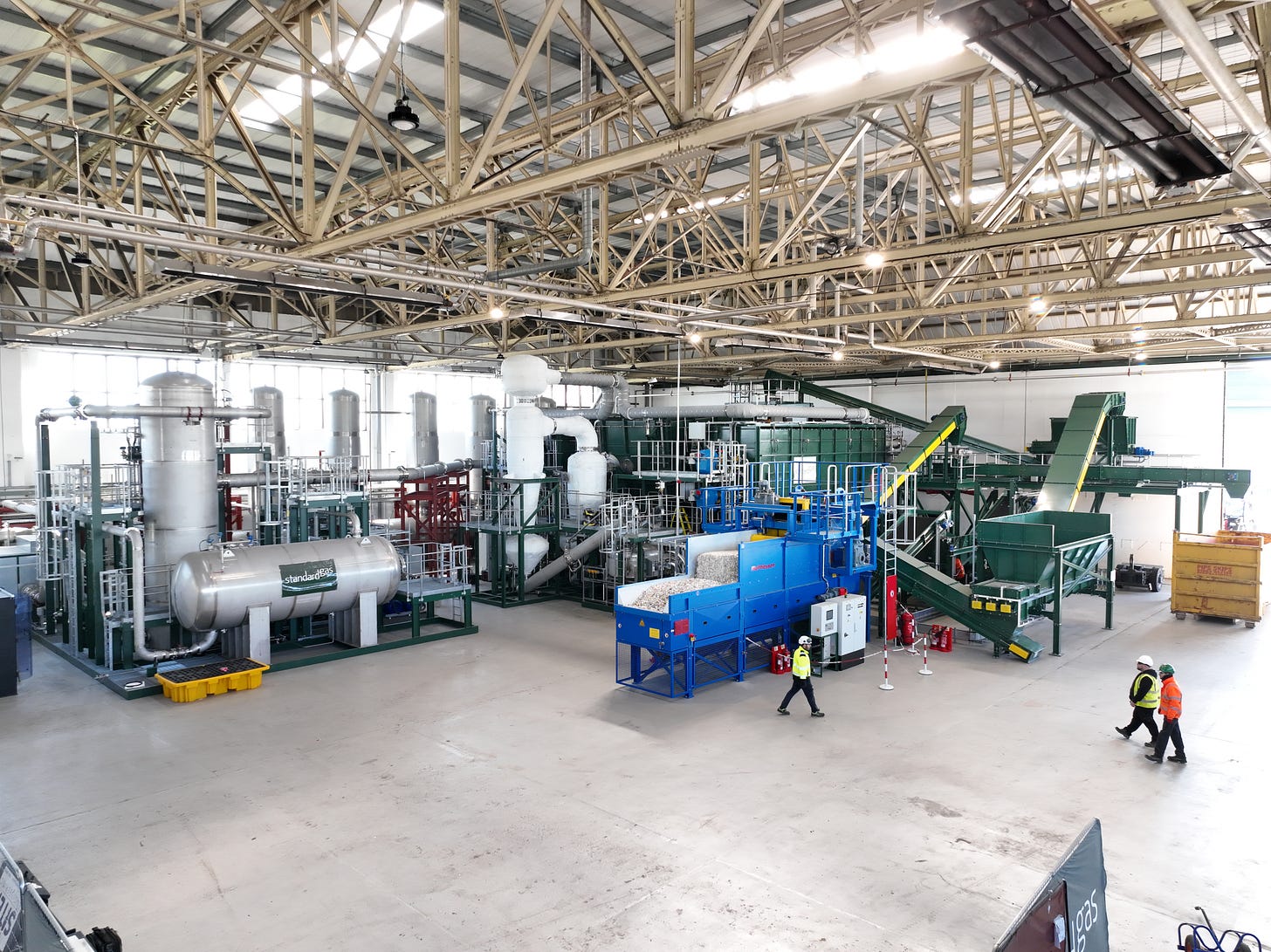Residual waste: a waste of energy and carbon removals?
A guest post from Coalition Member, Standard Gas Technologies
In 2022, households across the UK generated around 14.4 million tonnes of waste that didn’t get recycled. Instead, it was sent to landfills or incinerated, sometimes here at home, sometimes abroad. Incineration remains the default “final solution”, capturing only a sliver of the waste’s embedded energy while releasing nearly all of its carbon as CO₂.
Residual waste exists for two main reasons. Some materials, like polystyrene or PVC, simply can’t be returned to a useful form through conventional recycling. Others, like food-smeared packaging or mixed materials fused together, are too complex or contaminated to sort. Multi-layered plastics, aluminium-lined cartons, waxed paper, all of these were designed for performance, not for end-of-life recovery. And so, they’re incinerated or buried, locked into a waste management system still built around disposal rather than reuse.
This waste doesn’t just disappear. It emits fossil carbon from plastics and synthetic products, and biogenic carbon from paper, wood, and organics. Whether through burning or decomposition, both pathways contribute to global warming.
But within that waste lies untapped potential. What we currently treat as a problem may also offer an opportunity, a way to recover energy and sequester carbon that would otherwise go straight into the atmosphere. It’s not about pretending waste is good. It’s about acknowledging that until we eliminate it entirely, we need smarter ways to handle what’s left.
That’s the idea behind Standard Gas’s SG100 plant, now being commissioned ahead of commercial operation on a former RAF base in Norfolk. Our team, supported by local engineers, contractors, and UK fabricators, has adapted a proven method used to create biochar from biomass. Only this time, we’re applying it to mixed feedstocks that make up the residual waste we all produce.
Each SG100 unit, modest in size, can process up to 48,000 tonnes of waste a year, generating around 40,000 MWh of energy, enough to power 10,000 homes. Depending on the input, it can also remove up to 25,000 tonnes of carbon annually. The plant itself fits neatly within a hectare, with its core systems compact enough to stand on the footprint of two tennis courts.
At the heart of the process is a combination of non-burn pyrolysis and gas cracking, generating three things: heat, a synthesis gas, and a solid carbon char. The gas is so clean it can replace natural gas in engines, kilns, or boilers, or be processed for grid injection, renewable transport fuel or chemical feedstock. The solid byproduct, refuse-derived char (RDC), can be locked away in construction products where its biogenic carbon content in a stable form represents a genuine carbon sequestration under the GHG Protocol.
Of course, it’s not enough to claim carbon removal. It has to be proven. That’s why the Standard Gas team is applying advanced C-14 analysis and continuous gas monitoring to distinguish biogenic carbon from fossil-based content at industrial scale. Every batch of char can be certified, every carbon atom accounted for. This work is already underway in a partnership with the Ithaka Institute, Carbon Standards International and Cula Technologies.
Currently, Standard Gas is preparing to commission its first commercial-scale solution for processing mixed residual waste, aiming not just to reduce, but to close the loops on carbon and energy that have long been left open.
Commissioning a new technology is in equal parts exhilarating and nerve-wracking. There’s the thrill of pushing the boundaries, taking a concept that promises both carbon removal and circular waste upgrading into useful fuels, bringing it together beyond CAD models and presentations. Meanwhile, the path is riddled with uncertainty.
Financially, it’s a tightrope walk: upfront capital costs are significant, and investors want assurances with scaling of technologies and a market where policy support can shift with the political wind. Technologically, the challenges stack up quickly, from feedstock variability and the system’s stability to verifying carbon sequestration at scale. Every system test, minor glitch or setback form part of the learning curve in bringing a new process to commercialization. But Standard Gas has been here before during the development of the SG100’s little brother, the SG50, which enabled the team to prove and patent the technology.
Now it’s time for the much bigger and considerably better SG100 to take the technology towards a market launch. And after all the challenges comes the awe: witnessing the production of carbon negative energy and inert carbon-rich RDC from garbage that would otherwise be burned, decomposing in a landfill, or just dumped, offers a much better alternative and a route to Net Zero and the Circular Economy.
Many thanks to Oliver Grogono, Carbon Manager at Standard Gas, for creating this blog with us! You can find out more about Standard Gas and everything they’re building on their website: standardgas.com.
To learn more about The Carbon Removal Show Coalition and how to get involved, please get in touch.





Do you have a feel for your projected CO2 emissions per tonne of feedstock? I suspect it will be way lower than incineration of refused at around 1.8-1.9 tonnes?